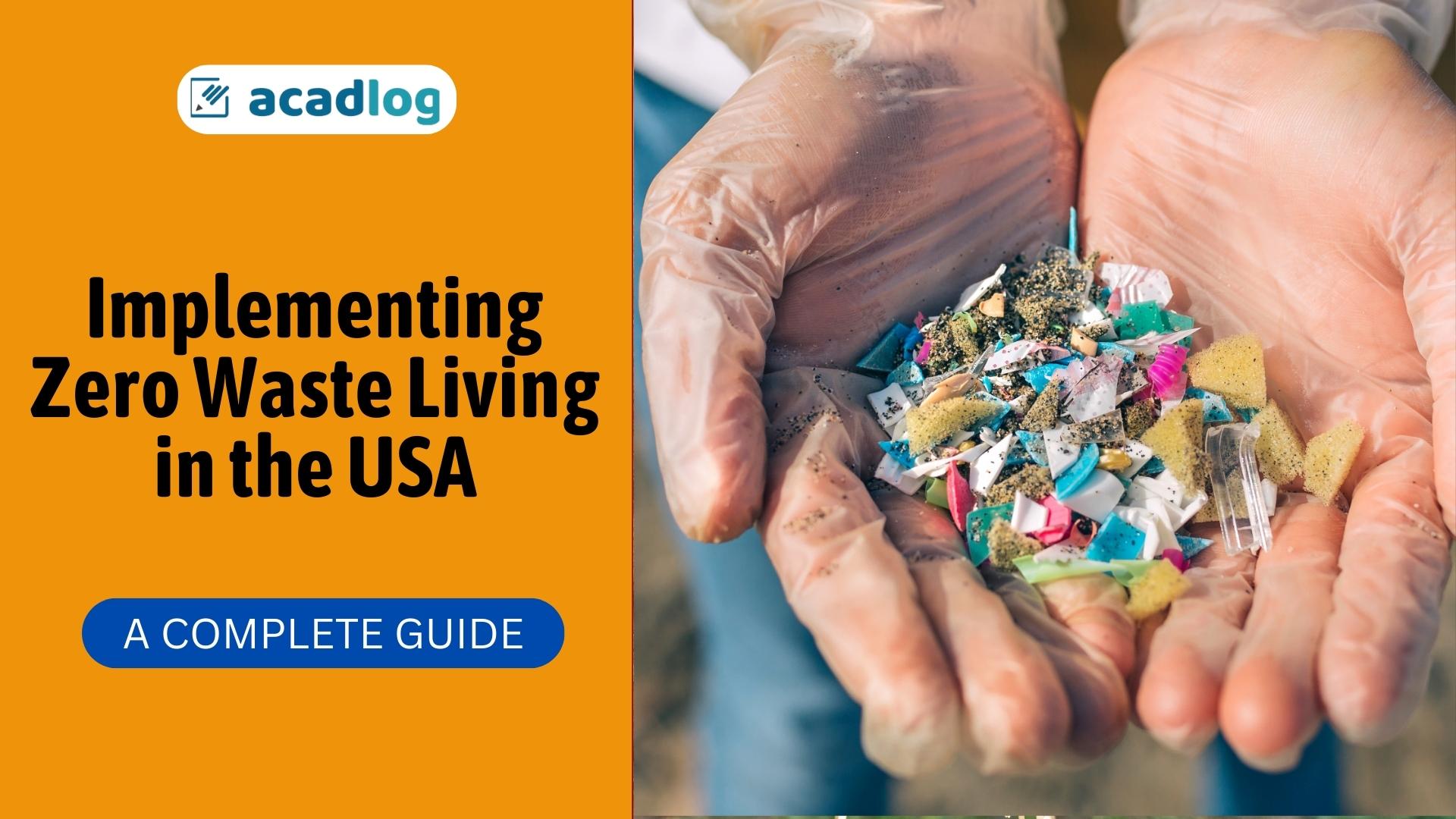Zero waste living is a lifestyle approach aimed at minimizing waste generation and maximizing resource efficiency. By adopting sustainable practices and mindful consumption habits, individuals in the USA can reduce their environmental footprint and contribute to a more sustainable future. Here's how to implement zero waste living in the USA:
1. Reduce Consumption
The first step toward zero waste living is to reduce consumption by making thoughtful purchasing decisions. Consider whether you truly need an item before buying it, and opt for durable, long-lasting products over disposable or single-use items. Prioritize quality over quantity and avoid impulse purchases to minimize unnecessary waste generation.
2. Refuse Single-Use Items
Say no to single-use plastics and disposable products whenever possible. Bring reusable alternatives such as shopping bags, water bottles, coffee cups, and utensils when out and about. Choose products with minimal packaging or opt for package-free options to reduce packaging waste. Refusing single-use items helps minimize waste at the source and encourages businesses to adopt more sustainable practices.
3. Reuse and Repurpose
Extend the life of products by reusing and repurposing items whenever feasible. Repair damaged or worn-out items instead of replacing them, and donate or sell items that are no longer needed to give them a second life. Get creative with upcycling projects to transform old materials into new and useful items, reducing the need for virgin resources and diverting waste from landfills.
4. Recycle Responsibly
Maximize recycling efforts by following local recycling guidelines and properly sorting recyclable materials. Educate yourself about what can and cannot be recycled in your area, and ensure that recyclables are clean, dry, and free of contaminants. Consider composting organic waste such as food scraps and yard trimmings to divert additional waste from the landfill and create nutrient-rich soil for gardening.
5. Compost Organic Waste
Composting is an effective way to manage organic waste and return nutrients to the soil. Set up a compost bin or pile in your backyard or explore community composting options available in your area. Compost kitchen scraps, yard waste, and other organic materials to reduce methane emissions from landfills and contribute to soil health and fertility.
6. Choose Sustainable Alternatives
Opt for environmentally friendly alternatives to conventional products and packaging. Look for products made from renewable materials, recycled content, or biodegradable materials. Support businesses and brands that prioritize sustainability and ethical practices throughout their supply chains, from sourcing to production and distribution.
7. Practice Mindful Eating
Reduce food waste by planning meals, buying only what you need, and storing food properly to prolong freshness. Use leftovers creatively and incorporate food scraps into recipes whenever possible. Consider buying in bulk or purchasing imperfect produce to minimize packaging waste and support efforts to reduce food waste throughout the food system.
8. Support Zero Waste Initiatives
Engage with community organizations, advocacy groups, and local government initiatives that promote zero waste practices and sustainable living. Attend workshops, events, and seminars to learn more about zero waste principles and connect with like-minded individuals. Advocate for policies and programs that prioritize waste reduction, recycling infrastructure, and sustainable resource management at the local and national levels.
9. Lead by Example and Educate Others
Be an advocate for zero waste living by leading by example and sharing your experiences with others. Encourage friends, family members, and colleagues to join you in adopting zero waste practices and making sustainable choices in their daily lives. Share tips, resources, and success stories to inspire and empower others to embrace a more sustainable lifestyle.
10. Embrace Continuous Improvement
Zero waste living is a journey, not a destination. Continuously evaluate your habits and routines to identify areas for improvement and refine your approach to reducing waste. Set realistic goals, celebrate progress, and remain committed to making positive changes that contribute to a healthier planet and a more sustainable future for all.
Conclusion
Implementing zero waste living in the USA requires a combination of conscious consumption, waste reduction strategies, and sustainable lifestyle choices. By following these principles and incorporating zero waste practices into your daily life, you can minimize waste generation, conserve resources, and contribute to a more sustainable and resilient future for our planet and communities.
Visit How, what and why, NBA queries and Trending times now for more articles like these:





